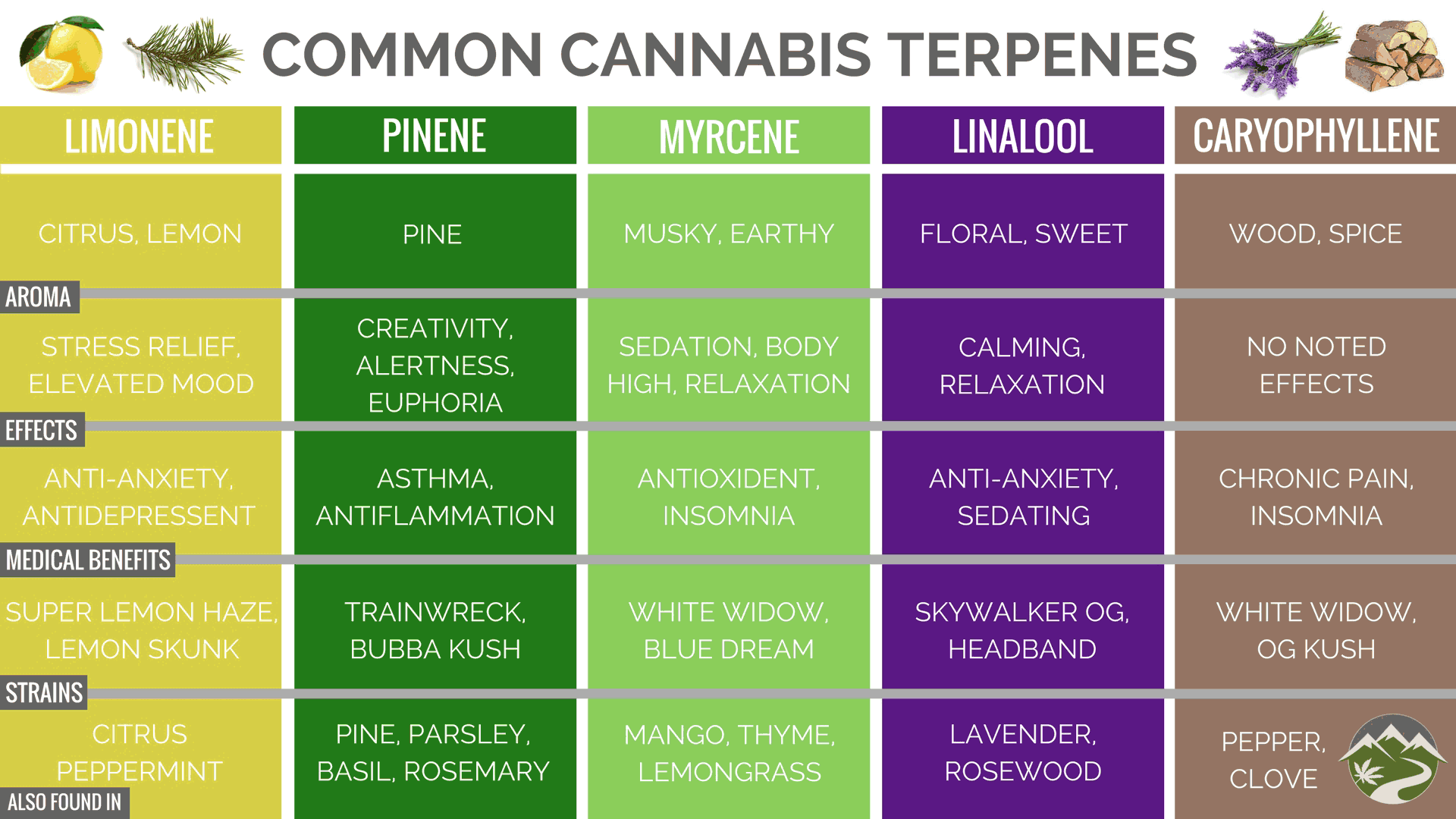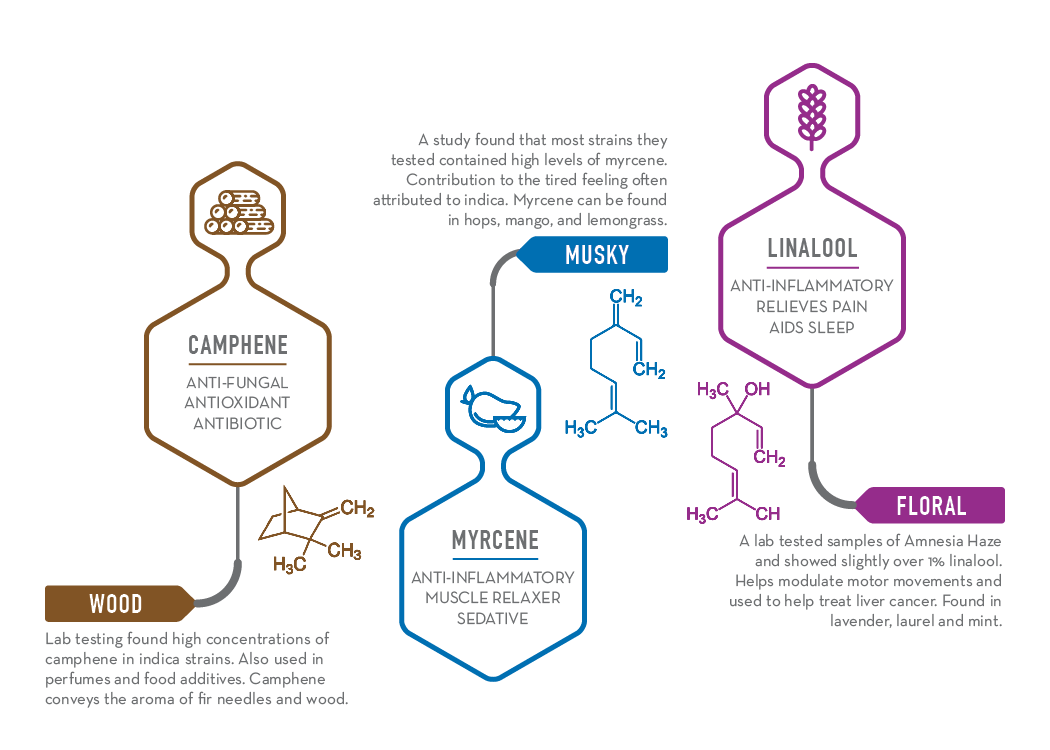Terpenes:
The cannabis plant consists of a wide variety of chemicals and compounds. About 140 of these belong to a large class of aromatic organic hydrocarbons known as terpenes (pronounced tur-peens). You may have also heard people talk about terpenoids. The words terpene and terpenoid are increasingly used interchangeably, although these terms do have different meanings. The main difference between terpenes and terpenoids is that terpenes are hydrocarbons (meaning the only elements present are carbon and hydrogen); whereas, terpenoids have been denatured by oxidation (drying and curing the flowers) or chemically modified.
Monoterpenes and Sesquiterpenes they basically contain hydrogen and carbon which makes them organic compounds. Monoterpenes contains two isoprene units. And sesquiterpenes contain 3 isoprene unit. Terpenes are secreted by many plants and animals in order to protect themselves from the predators.
More than 100 terpenes occur in the marijuana plant, and monoterpenes make up a large percentage of those occurring terpenes.
The main monoterpenes found in cannabis plants are terpinolene, myrcene, alpha-pinene, beta-pinene, limonene, and linalool. During the curing process of cannabis plant material, the monoterpenes evaporate more rapidly.
Various strains contain different levels of monoterpenes, which is why so many types of marijuana plants have such distinctive aromas and flavors. Environmental factors and the age of the plant also dictate a number of terpenes that are present in various strains.
Sesquiterpene is secreted in the cannabis plant’s sticky resin glands. All terpenes of the plant contain varying levels of tetracarbonyl (THC), cannabidiol (CBD), and other cannabinoids. The terpenes have the ability to bind to the brain’s receptors and are believed to provide varying medicinal marijuana benefits.
The ability to pass the blood brain barrier is especially pronounced with sesquiterpene which researchers have discovered actually has the capacity to enter the brain tissue, unlike other terpenes. All terpenes are thought to help the receptors in the body more easily accept THC, CBD, and other cannabinoids.
Terpenes contribute to not only the smell of cannabis but also the taste. Growers tailor cultivate specific strains to provide ample terpenes to appeal to cannabis connoisseurs. Various strains of cannabis have differing terpene ratios, which give the different strains their unique fragrances. Some marijuana strains smell like ripe blueberries, flowers, or fresh strawberries, but others are pungent and exhibit a strong skunk-like or diesel fuel odor.
Sesquiterpene is not unique to just the marijuana plant. It can also be found in varying levels in many herbs, fruits, and some plants.





